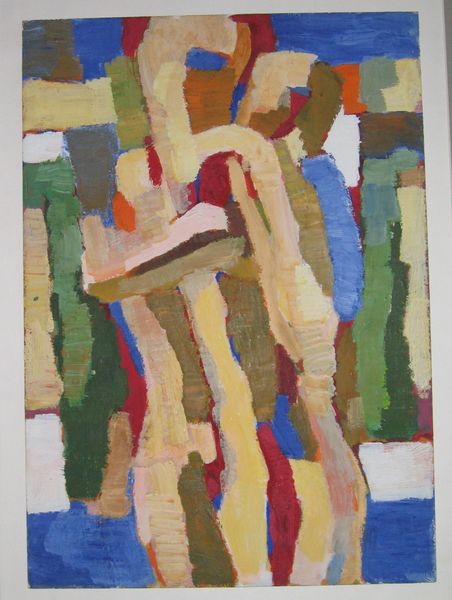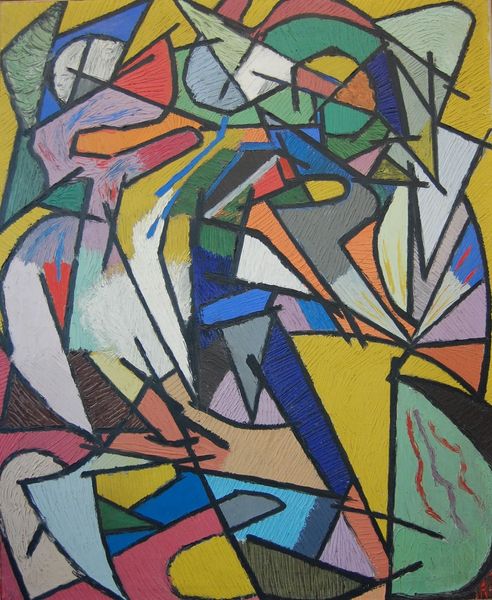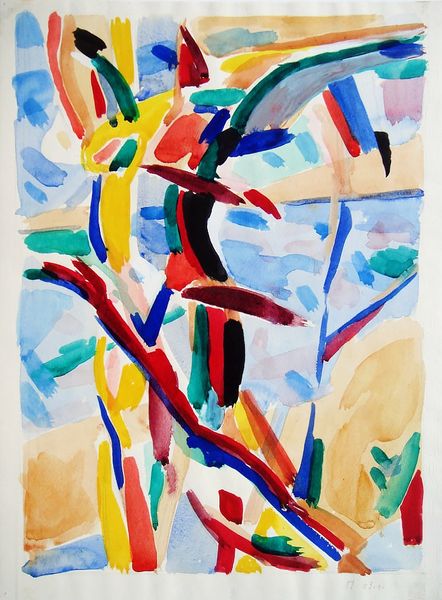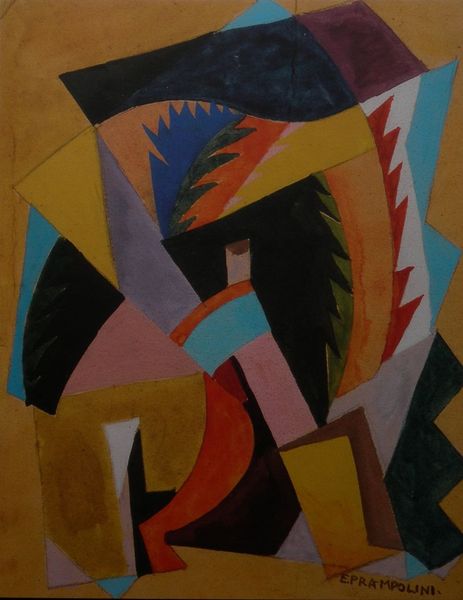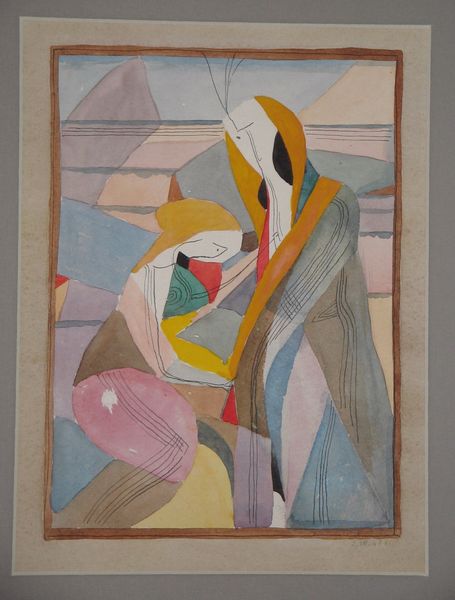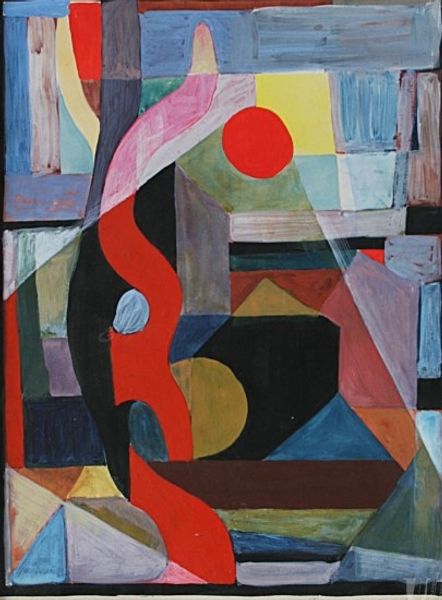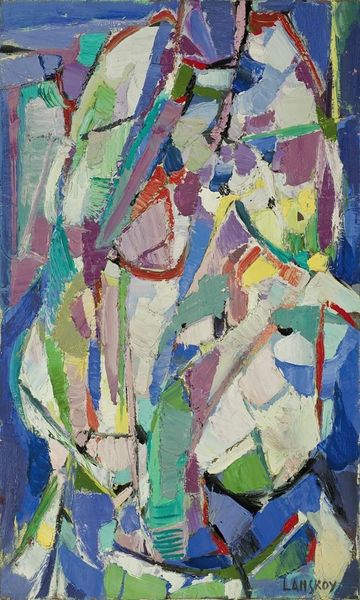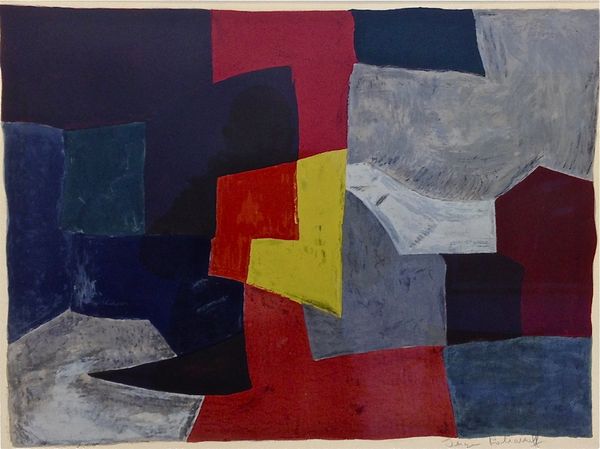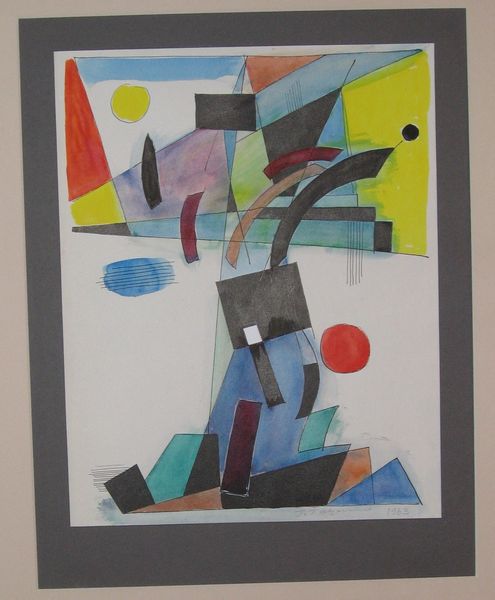
mixed-media, acrylic-paint
#
abstract-expressionism
#
mixed-media
#
abstract painting
#
pop art
#
acrylic-paint
#
figuration
#
acrylic on canvas
#
naive art
#
pop-art
Copyright: Hryhorii Havrylenko,Fair Use
Curator: Hryhorii Havrylenko’s “Composition,” painted in 1963, presents us with an intriguing example of mixed-media work incorporating acrylic paint, currently held in a private collection. What's your initial reaction to this piece? Editor: It’s certainly...vibrant. The use of color is immediately striking, though the composition feels a bit disjointed, almost deliberately naive in its arrangement of forms and patterns. Curator: That perceived naivete is a crucial entry point. Given the historical context of 1963, we might see echoes of post-Stalinist Ukraine. The turn toward abstraction allowed artists like Havrylenko to explore subjective experiences in a way that figuration could not. The very act of "composing" became a subtle act of defiance, reasserting individual expression within a system that had long suppressed it. Editor: I agree that the context is vital. But let’s think about the materiality – acrylic, becoming increasingly available at the time, allowed for that vibrant palette, and probably enabled him to layer and rework areas, producing a density, and even the feeling of roughness, not usually found in more traditional tempera techniques. Do you think there's also a reference to folk art here? Curator: Absolutely. I believe that the geometric patterns and flattened perspective can be read as referencing traditional Ukrainian folk motifs, subtly woven into an abstract framework. There's a distinct layering here not just of medium, but also of cultural meaning. It’s as though Havrylenko is creating a new visual language. I also detect elements of figuration embedded in the painting and maybe even a suggestion of portraiture. Editor: Right. It feels almost collage-like; though constructed using paint. The shapes interlock like components. Do you feel there's any reference to an earlier style? Is it trying to do something entirely new or looking back as well? Curator: The intermingling of vibrant, somewhat flattened forms suggests that the work stands at the nexus of Abstract Expressionism, and hints of what we recognize today as the Pop-Art aesthetic. It may well represent an embrace of Western modes of expression following years of suppression under Soviet realism, with Havrylenko integrating themes associated with gender, identity, race and broader political undercurrents Editor: Ultimately, reflecting on the techniques and context around "Composition" enables us to gain a renewed perception of how art forms materialize under specific conditions. Curator: I would only add that understanding these artistic strategies allow for recognition of what the paintings and related cultural forms signified at this time and what significance is conveyed by them today.
Comments
No comments
Be the first to comment and join the conversation on the ultimate creative platform.
